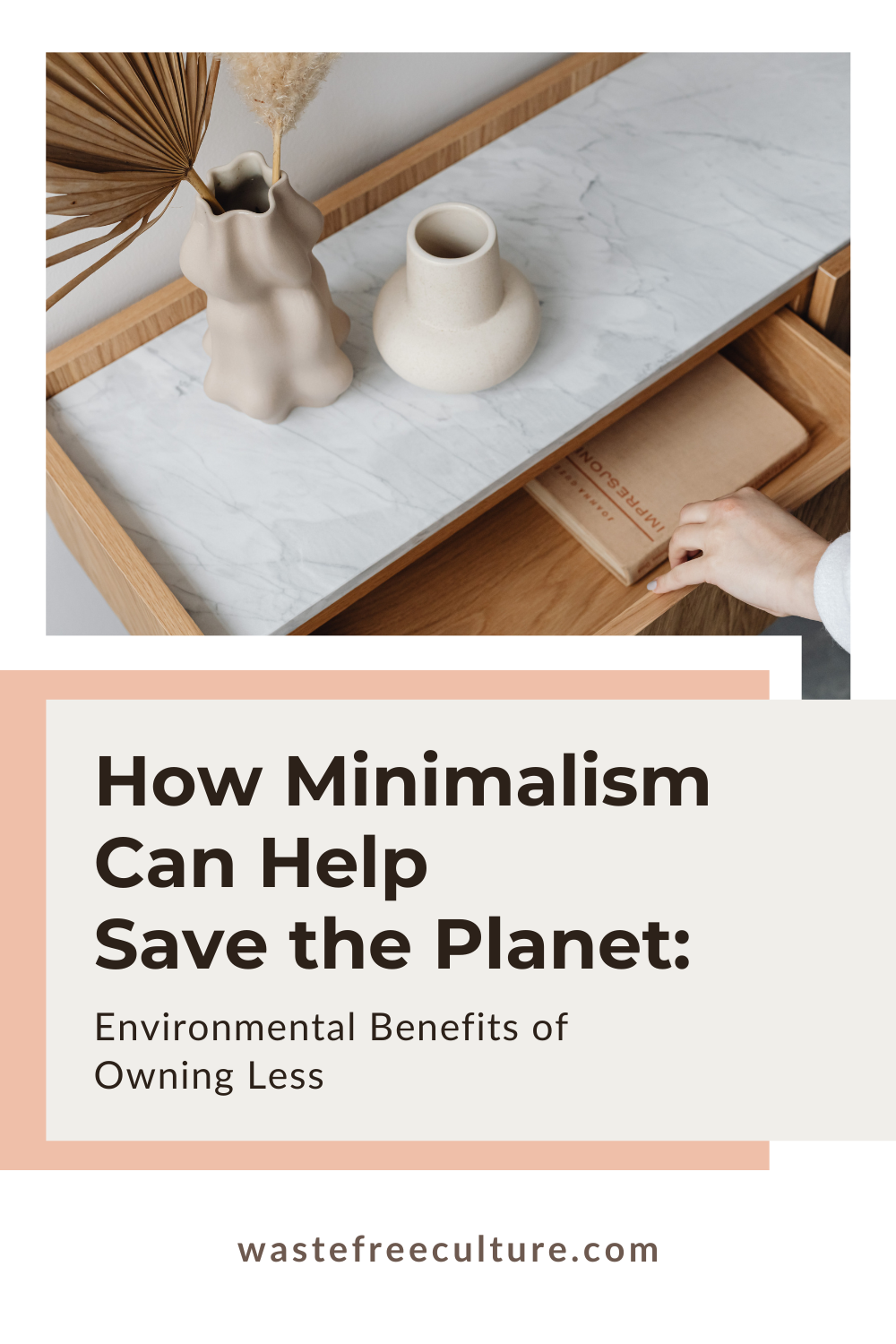Imagine if the solution to climate change, waste, and pollution was sitting right in your closet. Bold claim? Maybe—but the truth is, adopting a minimalist lifestyle goes far beyond decluttering your home. It’s a direct challenge to the culture of overconsumption that’s devastating our planet. Minimalism offers a way to live with less while contributing to a greener, more sustainable future.
In this blog, we’ll explore how owning fewer things isn’t just about simplicity; it’s about sustainability. You’ll discover why every choice you make as a minimalist—whether it’s buying less, decluttering, or reusing—has the power to benefit the environment in profound ways.
Table of Contents
The Problem with Overconsumption
Overconsumption has become the hallmark of modern society, fueled by industrialization and relentless advertising campaigns. This phenomenon has led to an unprecedented strain on natural resources, contributing to pollution, waste, and the depletion of vital ecosystems.
Here are some eye-opening facts:
- The average American throws away nearly 81 pounds of clothing each year, with most of it ending up in landfills or incinerators (EPA, 2021).
- Globally, e-waste reached over 53.6 million metric tons in 2019, yet only 17.4% was properly recycled (Global E-Waste Monitor, 2020).
- Single-use plastics pollute oceans and waterways, with over 11 million metric tons entering the seas annually (Pew Charitable Trusts, 2020).
Every product we buy—from fast fashion garments to the latest gadgets—requires raw materials, energy, and transportation. This leads to massive carbon emissions and a growing waste problem.
Minimalism as an Environmental Solution
Minimalism offers a practical antidote to the challenges of overconsumption. By intentionally choosing to own less, minimalists contribute to reducing demand for new products and their associated environmental costs. Here’s how:
Reducing Waste
-
- Decluttering allows individuals to donate or recycle items, keeping them out of landfills.
- Fewer possessions mean less waste over time, as minimalists are less likely to overconsume.
Lowering Carbon Footprints
-
- Owning fewer things reduces the need for production, transportation, and disposal.
- Choosing secondhand or high-quality items with longer lifespans further minimizes environmental impact.
Promoting Sustainable Choices
-
- Minimalists prioritize quality over quantity, often opting for eco-friendly and durable products.
- This shift supports sustainable industries and a circular economy.
Practical Environmental Benefits of Minimalism
Minimalism’s impact on the environment extends into everyday life. Here are some tangible benefits:
Decreased Energy Usage:
Maintaining fewer possessions means less energy spent on storage, cleaning, and maintenance.
Simplified Waste Management:
With a focus on reusable and multi-purpose items, minimalists generate less household waste.
Support for Circular Economies:
Purchasing secondhand items or repurposing existing ones keeps resources in use longer.
Global Efforts Toward Minimalism
Patagonia’s Worn Wear Program
Outdoor apparel company Patagonia encourages minimalism through its Worn Wear Program, which promotes repairing clothing instead of replacing it. By extending the life of garments by just nine months, carbon, water, and waste footprints can be reduced by 20-30% (WRAP, 2021). Patagonia’s initiative has saved thousands of items from landfills while fostering a minimalist mindset among consumers.
Sweden’s “Repair Café” Movement
Sweden has seen a rise in repair cafés, where people bring broken items—electronics, furniture, clothing—for repair instead of discarding them. This movement reduces waste and encourages thoughtful consumption. In 2020 alone, these cafés helped repair over 30,000 items, preventing significant waste and resource extraction.
Japan’s Minimalist Movement
Kamikatsu, a rural town in Japan, leads in environmental innovation through its zero-waste initiative. Residents meticulously separate waste into 45 categories, achieving an 80% recycling rate by 2021. The town promotes a minimalist lifestyle with secondhand goods and community programs, showcasing how local action can drive sustainability globally.
How to Get Started with Eco-Minimalism
Ready to make a change? Here are simple steps to begin your eco-minimalist journey:
- Start Small: Begin with one area of your life, like your wardrobe or kitchen, and declutter thoughtfully.
- Buy Intentionally: Before buying something, consider if it genuinely serves a purpose in your life and contributes to mindful and responsible living
- Choose Secondhand: Support thrift stores or online marketplaces to reduce demand for new products.
- Opt for Reusables: Replace disposable items with reusable alternatives like water bottles, cloth bags, and stainless steel containers.
- Educate Yourself: Learn about sustainable practices and seek out communities that share eco-minimalist values.
If you’re ready to make a difference for the planet and simplify your life, start with small, actionable steps. My ebook, The 30-Day Eco-Minimalist Blueprint, provides a step-by-step guide to embracing minimalism and living more sustainably. From decluttering responsibly to adopting eco-friendly habits, this blueprint is your roadmap to a greener future.
Conclusion
Minimalism is more than just living with less—it’s a powerful tool for combating the environmental challenges we face today. By choosing to simplify your life, you’re not only freeing yourself from the burden of excess but also contributing to a healthier planet.
Take the first step today. Declutter a drawer, commit to buying less, or join a sustainable living community. Every small action adds up, and together, we can create a ripple effect that leads to lasting change. The planet will thank you!
Follow me in social media:
